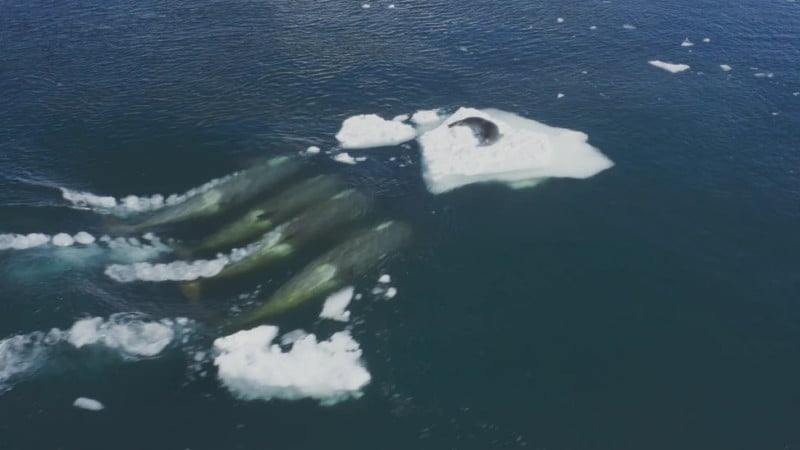Footage of Orcas Hunting a Seal Shot from a Drone for the First Time
The BBC has released its first episode of Frozen Planet II which featured an incredible Orca hunt that was filmed with drones for a never-before-seen perspective.
What the BBC calls “lightweight drones”, allowed the documentary crew to film a pod of killer whales “wave-washing” a seal off a sheet of ice, a technique that is only utilized by 100 orcas living in the Antarctic peninsula.
The only other time the wave-washing method was filmed was featured in the original Frozen Planet series and this is the first instance of the intelligent hunting move being filmed from above.
Wave-Washing
Killer whales are known for their intelligence and the wave-washing behavior shows their ability to work as a unit.
After spotting a seal on a sheet of ice, the orcas come together as a family and create a wave that washes the seal off the ice. The clever mammals will calculate the size of the wave needed based on the number of seals on the ice, how many orcas are present, and how far away the seal is.
Not dissimilar to elephants, the knowledge of how to hunt and the best places to hunt is stored in the matriarch who runs the family and can get to over 100 years old.

Drones have played a big role in the series,” says producer Alex Lanchester.
“‘Wave-washing’ behavior was actually captured in the original Frozen Planet but without that aerial perspective. This is about as remote as you can be in the Antarctic Peninsula,” he says.
“It would be hard to get a helicopter out there and a helicopter could disturb their behavior. Drones allow you to see how those whales are coordinating. It means we’re able to bring new revelations.”
The team also employed new pole cameras to give an underwater insight, where diving would have been too dangerous.
FPV Drones
Frozen Planet II, narrated by David Attenborough, also deployed high-speed first-person view (FPV) drones to fly down mountains as an avalanche took place, in another television first.
A cameraperson donned virtual reality (VR) style goggles to help get the camera as close to the action as possible. FPV drones are capable of exceeding speeds of 100 miles per hour owing to their incredibly lightweight.
The FPV drones that the camera crew used could capture 360 degrees of vision enabling them to choose their camera angles in post.
Frozen Planet II is shown on Sundays on BBC One in the U.K. The program is expected on PBS in the U.S. but there is currently no word on the air date.